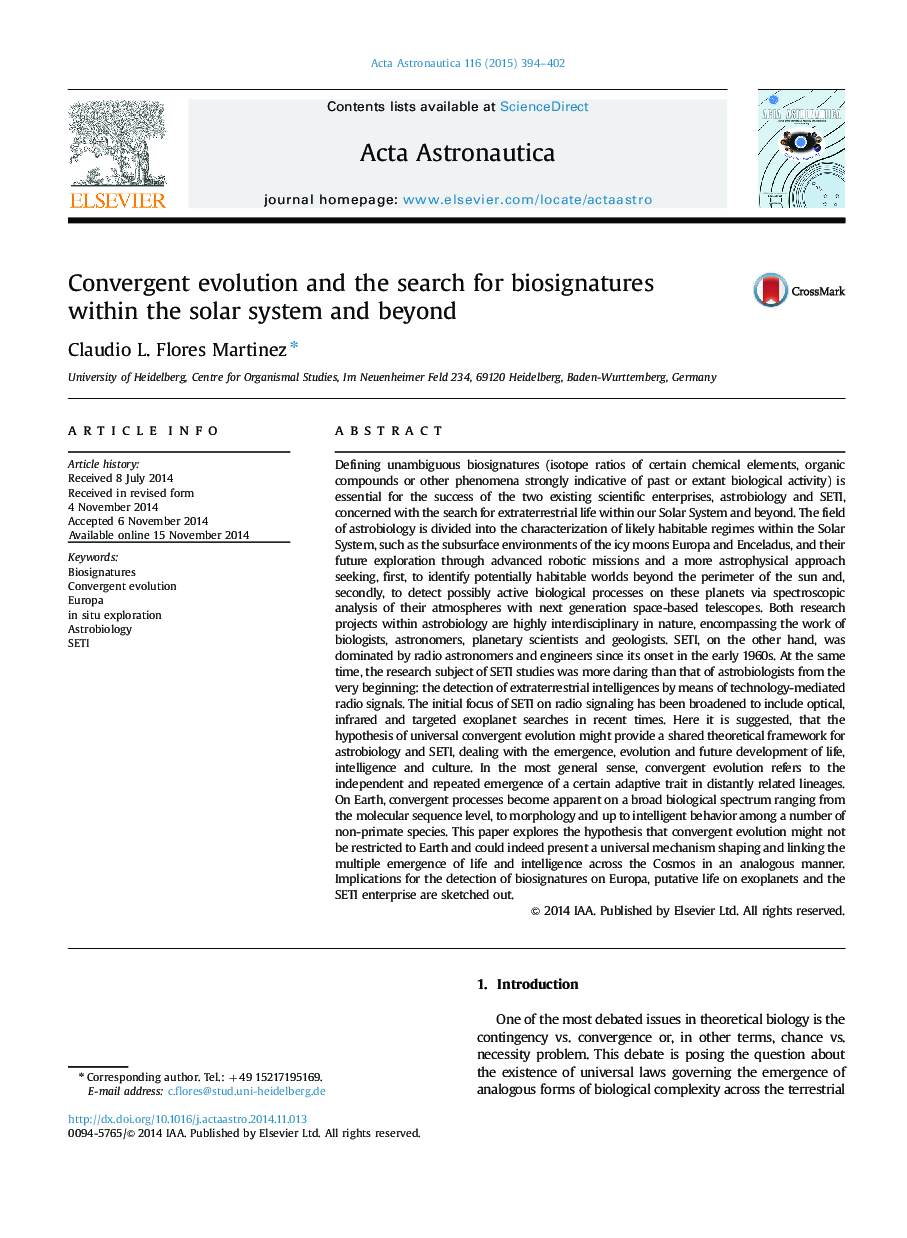| کد مقاله | کد نشریه | سال انتشار | مقاله انگلیسی | نسخه تمام متن |
|---|---|---|---|---|
| 1714313 | 1519938 | 2015 | 9 صفحه PDF | دانلود رایگان |
• Convergent evolution is presented as a unifying principle for astrobiology and SETI.
• The concept of Minimal Convergent Traits (MCTs) is introduced.
• Instruments for in situ exploration missions to Europa are suggested.
• Implications of convergent evolution for SETI are described.
Defining unambiguous biosignatures (isotope ratios of certain chemical elements, organic compounds or other phenomena strongly indicative of past or extant biological activity) is essential for the success of the two existing scientific enterprises, astrobiology and SETI, concerned with the search for extraterrestrial life within our Solar System and beyond. The field of astrobiology is divided into the characterization of likely habitable regimes within the Solar System, such as the subsurface environments of the icy moons Europa and Enceladus, and their future exploration through advanced robotic missions and a more astrophysical approach seeking, first, to identify potentially habitable worlds beyond the perimeter of the sun and, secondly, to detect possibly active biological processes on these planets via spectroscopic analysis of their atmospheres with next generation space-based telescopes. Both research projects within astrobiology are highly interdisciplinary in nature, encompassing the work of biologists, astronomers, planetary scientists and geologists. SETI, on the other hand, was dominated by radio astronomers and engineers since its onset in the early 1960s. At the same time, the research subject of SETI studies was more daring than that of astrobiologists from the very beginning: the detection of extraterrestrial intelligences by means of technology-mediated radio signals. The initial focus of SETI on radio signaling has been broadened to include optical, infrared and targeted exoplanet searches in recent times. Here it is suggested, that the hypothesis of universal convergent evolution might provide a shared theoretical framework for astrobiology and SETI, dealing with the emergence, evolution and future development of life, intelligence and culture. In the most general sense, convergent evolution refers to the independent and repeated emergence of a certain adaptive trait in distantly related lineages. On Earth, convergent processes become apparent on a broad biological spectrum ranging from the molecular sequence level, to morphology and up to intelligent behavior among a number of non-primate species. This paper explores the hypothesis that convergent evolution might not be restricted to Earth and could indeed present a universal mechanism shaping and linking the multiple emergence of life and intelligence across the Cosmos in an analogous manner. Implications for the detection of biosignatures on Europa, putative life on exoplanets and the SETI enterprise are sketched out.
Journal: Acta Astronautica - Volume 116, November–December 2015, Pages 394–402
